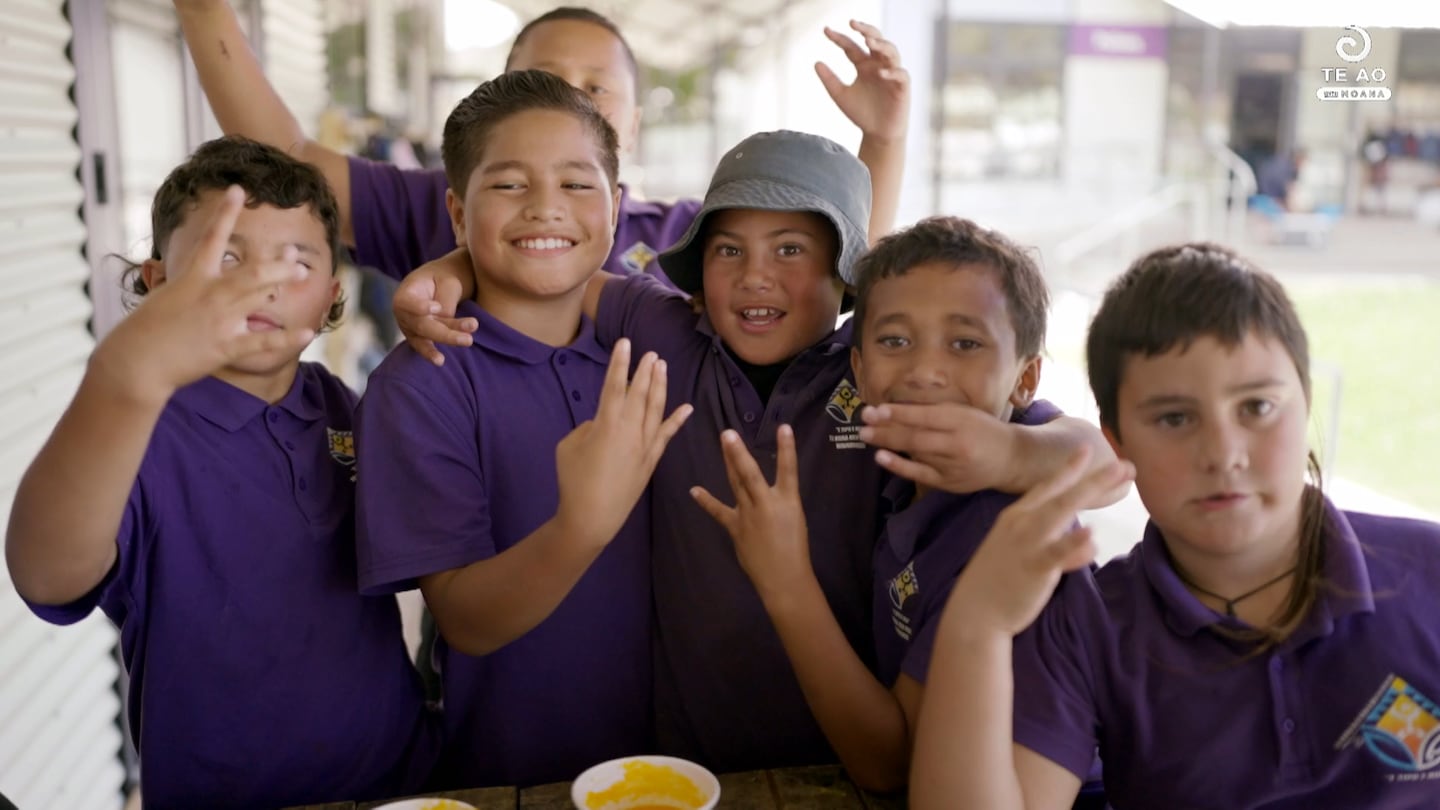A holistic, trauma-informed approach to teaching kaimahi at Te Kura Reo Rua o Waikirikiri in Kaiti, Gisborne, is changing the lives of their tamariki with a unique way of teaching, setting a blueprint for other schools around the motu to follow.
To carry about the mahi, Principal Yolanda Julies leads a wellbeing team of staff that provides wrap-around support for whānau and tamariki.
It started before Covid-19 arrived in Aotearoa, when staff saw an increase in issues amongst the tamariki, including self-harm and depression.
“A lot of our kids were withdrawn and they weren’t flourishing as they were supposed to. They displayed a lot of anxiety, lots of anger, lots of fear, depression. A lot of our kids were vaping and we’re doing self-harming,” says Julies.
“There is a lot of food insecurity. A lot of our whānau go through stress for various reasons. Poverty is one of the stress factors. And then of course there are other challenges in their homes. And I believe intergenerational trauma contributed to some of the stresses that are happening within the home life.”
The holistic approach to learning is in its third year so far and the results speak for themselves.
“I’ve seen a huge reduction. I used to have three draws of vapes that I’ve collected. I’ve got no vapes now. Our kids aren’t vaping. No incidents of vaping, no incidents of self-harm,” says Julies.
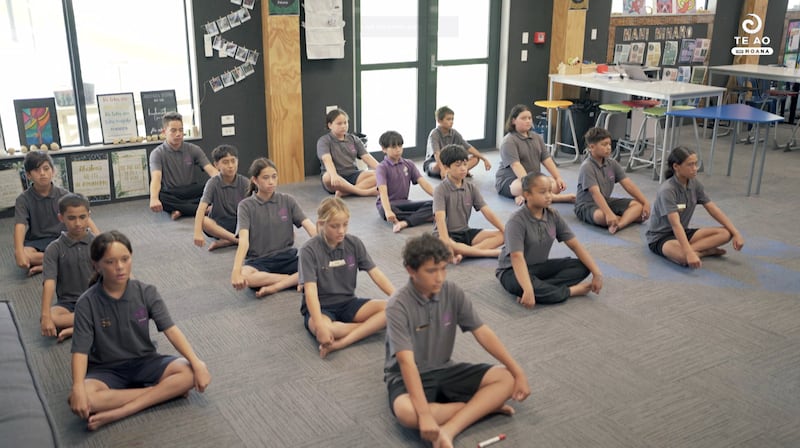
Kaupapa run within the wellbeing team
The wellbeing model follows two concepts; Rose Pere’s Māori Health model Te Wheke in line with Sir Mason Durie’s Te Whare Tapa Whā.
“We have different components that contribute to the wholeness of our wellbeing model. When I look at social and emotional learning, we teach our kids that they are kaitiaki of their bodies, their minds, and kaitiaki of their waha, te whare waha the words that we speak, the words that come out of our mind, te whare hinengaro thinking about our thoughts, what we think and how we think and everything that we do at kura aligns with Te Whare Tapa Wha model,” says Julies.
The wellbeing team carries out multiple practical activities to help develop children’s emotional intelligence.
Mauritau is one, and is a part of the daily life of tamariki at the kura, says kaiako Megan Windyback.
“Our day always starts with a karakia and followed closely by mauritau. So that might look different in each class, but everybody is practicing it. It’s embedded in our school culture. It might look like meditation, yoga, kapa haka, but we see it as important as maths, reading and writing is.”
Kaiako Te Aowera Kupenga-Tiaki says, “We also do mau rākau and it’s just getting that cultural aspect and reconnecting our tamariki with not only the taiao but even our mahi a ā tātou tipuna.”
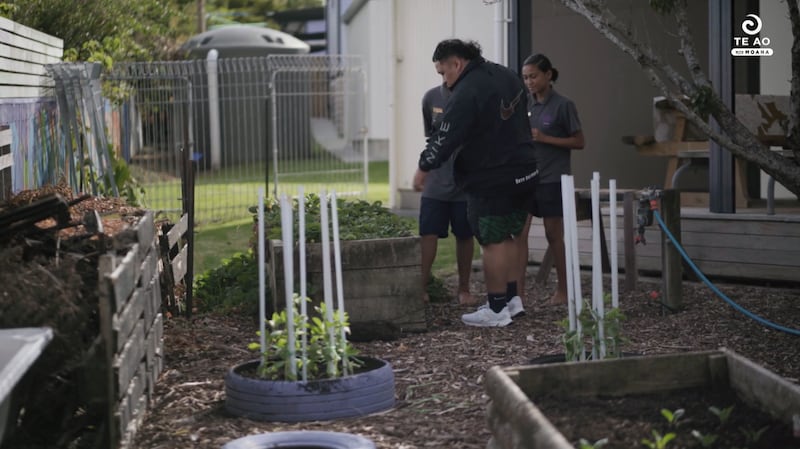
They also practice Papatuanuku; if a child feels stressed or can’t focus they are allowed to leave the classroom on their own accord for a break.
Deputy principal Manny Horua says it helps tamariki to develop a toolkit of strategies to use when they become unsettled or dysregulated.
“It’s really helping to grow both socially and emotionally. They’re able to manage themselves, talk about their feelings more, and it’s going to help them as they get older,” says Horua.
“For some tamariki it might be art or some tamariki, they may go for a walk around the field. Some kids might get on bikes and go for a ride.”
Kupenga-Tiaki says it’s rewarding seeing tamariki, “use all these different huarahi, whether it’s doing press up, going to whakapakari tinana, jumping on the court to shoot some hoops, going for a run around the field, grabbing a rakau, grabbing a poi, even grabbing koauau… We are just here to provide these different huarahi for them and support them and kei a rātou te tikanga.”
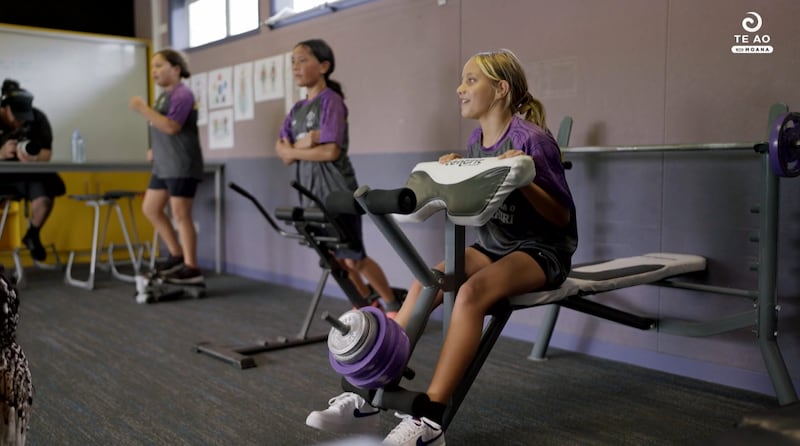
Morning gym sessions
Kaimahi go over and above at Te Kura Reo Rua o Waikirikiri. Every morning they pick up students at 6am for a workout in the school gym, led by Albie Nepia.
“We’ve got to remove the barriers from them. So if we go to them and we pick them up, that’s a barrier that’s no longer there,” says Nepia.
“With our kids, because a lot of them have struggles in the morning, they come from backgrounds that aren’t ideal. It’s getting them out of that environment nice and early, getting them into a positive environment, especially with them going through puberty and with the changes to their hormones. So we try and get their positive orphans kicking in nice and early, get them having breakfast as well.”
Nepia says doing physical fitness in the morning is vital in helping to mentally prepare tamariki for the day.
“Before we had this program, some of them wouldn’t settle them until after lunch once they had kai in them. And having this program, they’re settled straight away. Ready to learn and engage straight away,” says Nepia.
It’s also helped improve the behaviour of tamariki. Julies says prior to having the holistic approach of learning, the school had 10 to 12 stand-downs a year.
“I have zero stand-downs at the moment and the reduction was just so evident. Our kids are so tau and calm. They are more purposeful, they’re engaged, they participate. Tell me of another school where kids get up at six o’clock in the morning to come to a gym to start their day.”
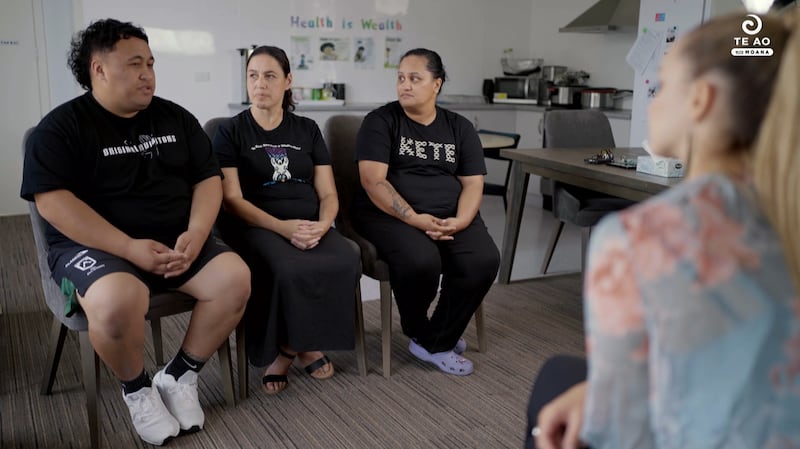
Helping tamariki who have experienced trauma
Julies has recently completed her PHD studying the effects of a holistic approach to children’s learning success. Putting that theory into action is what has led the change at her kura.
“We know that kids, who come from trauma experiences, are in survival mode and they’re functioning from a trauma brain which is at the bottom of the brain,” says Yolanda.
“They don’t even reach the cortex, which is at the upper level of the brain where all the learning is taking place, because they’re in survival mode. They are in the trauma brain all the time. So it is important for us to shift them from out of the trauma brain so that they can reach the cortex where the learning is happening.”
Wellbeing before academia - how does it work?
Julies says there’s no point wasting time trying to teach tamariki before looking after their wellbeing.
“It’s hard for people to understand that no learning is actually even taking place at. Why waste your time on learning first? If you can start at the bottom, making sure that our kids are well, that they are in a good space and a place for learning, learning becomes easier if they are ready for learning.”
Kaiako Ashlee Maka agrees and says, “a kid is not going to learn if they’re hungry, if they’re tired or if they’re dysregulated”.
“If you actually break down the barriers and actually take the time to look at the wellbeing of that child you’ll understand more and you’ll be able to actually help that child learn better,” says Maka.
“For example, you’re looking at a kid with ADHD who has a short tension span. You know, he’s got ADHD, but you still expect that child to sit there with a book and be still and quiet, which doesn’t work. We look at the areas that that kid is strong in and we try and teach the academic stuff through their strengths.”
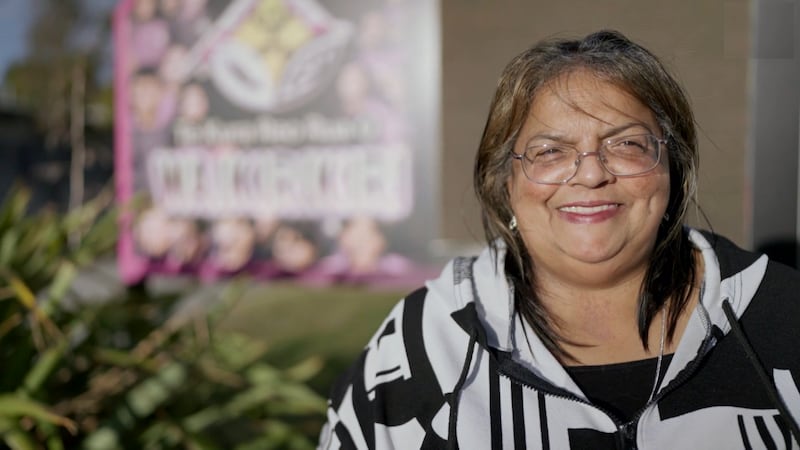
He ngākau Māori
Principal Julies is not Māori and wasn’t born in New Zealand. She grew up in Capetown, South Africa, and moved to Aotearoa 28 years ago. But she can relate to the experiences of tamariki at her kura.
“I come from a marginalized background as well and, growing up, I can relate to some of the issues that our tamariki have.”
Julies lived in the apartheid era and experienced racial discrimination, she says.
“I know what it’s like to be put to the back of the row. I know what it’s like to use a different entrance to use a different, um, toilet to use, sit at the back of the bus, and I know what that’s like. So that was my life in South Africa.
“When I look at the history of South Africa and try to compare it to what I see in New Zealand I see lots of similarities,” she says.
“The land confiscation. That’s one of the things. I was uprooted from my place of birth and was forced to live in a township. I was forced to give up the freedom of the beautiful beaches where we lived due to the apartheid era. And we were just forcefully removed and placed in a township where we lived close to each other.”
Julies also has a religious background and shares the same values with Māori.
“I connect with my staff, with the whānau, with the tamariki through my values. I was brought up in a Christian home. So I have values that align with values that, Māori have,values such as manaakitanga, values such as showing respect to our elders and our kaumātua,” says Julies.
“We place a lot of value on whānau in South Africa and that’s something that I love about the Māori culture. Our kids aren’t seen as individuals, but as part of their whānau and that is how I was brought up.”
Julies’ staff also speak so highly of her.
Horua says Julies, “shows kindness regardless of the circumstance”.
“Some days we may get intimidating people come through our office and she always shows the same grace no matter what or who comes through our office doors, through our classroom’s doors… It’s not just when she feels like it. She’s always, always like that. That’s her ngākau nui, that’s what makes her special.”
She also supports her staff and any ideas they have to help improve the lives of tamariki.
“She never puts barriers up for us. As the chalk face in front of the tamariki largely, she supports our children and supports our dreams for them and their parents’ dreams for them,” says Horua.
School counsellor Tui Keenan says a lot of people call Julies “Māori Ngākau”.
“ Even though she’s South African she’s been here for so long and she’s well respected with the kids, with the staff, with the community.”
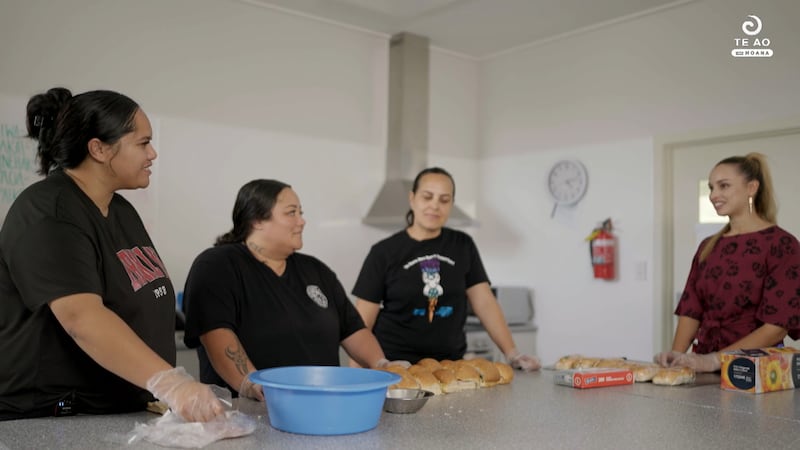
Kai-based initiatives and support for parents
Kennan also helps support tamariki and whānau through kai-based initiatives while also connecting them to the taiao (environment).
“The philosophy here is wellbeing first, education second, and that’s a really hard thing to say if you’re a school. So to change those mindsets and understand how important it is to have our children to be well enough to be educated makes sense - it’s not rocket science.”
One of the kai-based initiatives is free school lunches for tamariki. Parents Te Ringamau Ritchie and Karolyn Johnson are employed as chefs at the school to make the lunches.
Keenan says these māmā “are the heart of the school”.
“If the neurodiverse kids or some kids have had a bad day and need an aunty hug, they don’t go to the principal’s office. They come bypass the kitchen to see these ladies,” says Keenan.
“There was one occasion where we had a couple of runaways. So these ladies here took their gloves off, jumped in the car. They’re just so onto it. They know all the spots where these kids will be hiding, bring them back to school, have a milo, sit them down there. So they’re not only chefs, they’re counselors, your aunties. So they’ve got a real heart for our kids.”
The mothers can also see their tamariki benefitting. Ritchie says she has at the kura who is one of the neurodiverse kids.
“[Kaiako] really took the time to get to know him and take him to do things that he actually loves to get him to learn better. And he’s come a long way,” says Ritchie.
“He doesn’t work well in the classroom, in normal situations. They took time to learn about what he likes doing, like swimming, animals. So they will take him out to the SPCA because he hardly ever talked. That’s how they brought him out of his shell. He would never pick up a pen or anything. Now he’s coloring, he’s drawing. He loves it.”
Keenan also runs an initiative Kete Kai, a ‘My Food Bag’ type subscription based at Waikirikiri School using local vegetables and venison from deer hunted by tamariki and their parents. The seniors help pack three healthy meals into reusable chilly bags every Wednesday and are often involved in cooking the meals at home.
Johnson says, “It’s amazing. It’s awesome seeing the whole process from beginning to end. We know what’s in what our kids are eating… When the kids see their parents getting involved, it makes them more happy too and their dads as well.”
Ritchie says, “Taking my daughter into the bush with Tui, it opened my eyes up to my daughter. Like when my daughter sees me doing something, she knows she can do it too.”

A blueprint for other schools
Julies says she’s seen major changes in children’s behaviour. When she started working at the kura she said the school experienced “10 to 12 stand downs for a year”.
“I have zero stand-downs at the moment and the reduction was just so evident. Our kids are so tau and calm,” she says.
“Our overall attendance, we have classrooms with a hundred percent attendance every week. That in itself tells me that our kids want to be here, they’re happy to be here.”
She recommends the model at her kura to be a blueprint for other schools.
“I believe that every school does have children that need help. Some schools have various aspects of well-being that they look at. But I believe whatever you do, trauma-informed practice for marginalized kids should be part of a wellbeing model,” says Julies.
“I have seen how trauma-informed practice can transform the way that we do things at school and transform the way that kids react when they know that there are genuine, predictable, consistent people around that actually care.”
Manny Horua says, “We know that it works for tamariki and so if it works for our tamariki, it would work for all tamariki. It’s based on kindness, compassion, and understanding. So I could say that it’s definitely a blueprint for all, for all schools to follow.”


